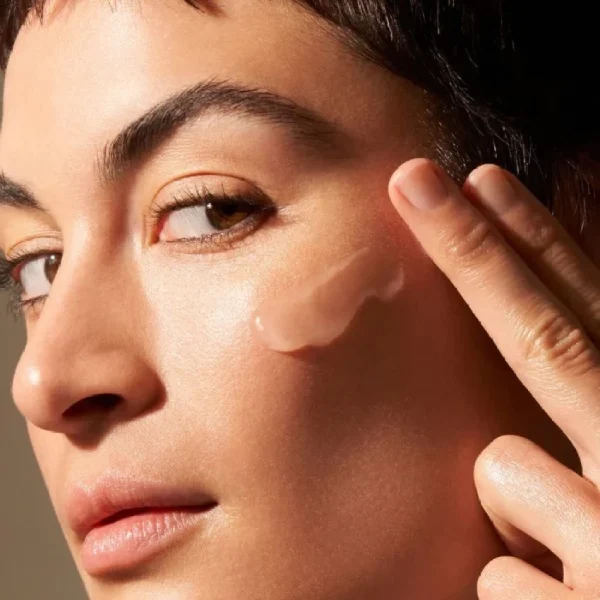
If you have dry skin, you know the struggle—foundation clinging to flaky spots, settling into fine lines, or looking patchy by midday. The good news? A great primer can be a total game-changer. It preps your skin, smooths things out, and helps your makeup last all day without drying you out. Let’s dive into how to choose the perfect primer for dry skin and get the most out of it.
Why Primer Is a Must-Have for Dry Skin
Think of a primer as the bridge between your skincare routine and your makeup. For dry skin, it does more than just help makeup stick—it hydrates, smooths, and gives your skin a fresh, healthy glow. A good primer can:
- Add hydration: Keep your skin feeling comfortable all day.
- Smooth texture: Even out those pesky dry patches and fine lines.
- Boost your glow: Give your skin that lit-from-within radiance.
What to Look for in a Primer
When shopping for a primer for dry skin, check the ingredients label and go for options with these hydrating superstars:
- Hyaluronic Acid: A moisture magnet that keeps your skin plump.
- Glycerin: Draws water to your skin for a softer feel.
- Squalane: A lightweight oil that mimics your skin’s natural moisture.
- Vitamin E: Locks in hydration and protects against dryness.
- Aloe Vera: Soothes and calms dry, irritated skin.
Features That Work Best for Dry Skin
- Hydration First: Look for creamy or gel-like primers that add moisture to your skin. Skip anything mattifying—it’s not your friend!
- A Dewy Finish: Primers with a radiant glow can make your skin look naturally fresh.
- Long-Lasting Wear: Go for primers that keep your makeup in place without making your skin feel tight or dry.
How to Apply Primer Like a Pro
- Start with Skincare: Cleanse, tone, and moisturize before reaching for your primer. Well-prepped skin is key!
- Use Just Enough: A pea-sized amount is all you need—less is more here.
- Focus on Problem Areas: Dab it where you’re driest (like cheeks or around the nose) and blend out gently.
- Let It Set: Give your primer a minute or two to absorb before layering on foundation.
Some Tried-and-True Favorites
Not sure where to start? Here are some primers that work wonders for dry skin:
- Laura Mercier Pure Canvas Hydrating Primer – Lightweight and packed with skin-loving ingredients.
- Too Faced Hangover Primer – Coconut water gives your skin an instant hydration boost.
- Milk Makeup Hydro Grip Primer – Hyaluronic acid locks in moisture and keeps makeup in place all day.
- e.l.f. Hydrating Primer – A budget-friendly gem with vitamin E and aloe vera.
Tips for a Flawless Look
- Pair your primer with a hydrating foundation for an extra boost.
- Avoid piling on too many layers—it can make your makeup look heavy.
- Keep a facial mist handy to refresh your makeup and add hydration throughout the day.
Frequently Asked Questions About Primers for Dry Skin
1. Why is primer important for dry skin?
A good primer is like a secret weapon for dry skin. It preps your face for makeup by hydrating and smoothing, so you don’t have to worry about foundation clinging to dry patches or looking flaky throughout the day.
2. How can I tell if a primer works for dry skin?
Look for primers with ingredients like hyaluronic acid, glycerin, squalane, or aloe vera—these keep your skin moisturized and happy. Stay away from mattifying primers or ones heavy on silicone, as they can make dryness more noticeable.
3. Can I skip moisturizer if I’m using primer?
Nope! Moisturizer is essential to keep your skin hydrated. Think of primer as an extra step to lock in that hydration and create a smooth surface for your makeup—not a replacement for moisturizer.
4. What’s the best way to apply primer on dry skin?
After your moisturizer, dab on a pea-sized amount of primer. Focus on areas where your skin feels rough or dry, like your cheeks or around your nose, and gently blend it in. Let it sit for a minute before adding foundation.
5. Can I use a hydrating primer with any foundation?
For the best results, pair a hydrating primer with a foundation designed for dry skin—like one with a dewy or moisturizing formula. Using a matte foundation can cancel out the benefits of your hydrating primer.
6. How do I stop makeup from sticking to dry patches?
Start with a hydrating primer and make sure your skin is well-moisturized before applying makeup. Use a foundation that works for dry skin and avoid heavy powders, which can make flakes stand out. A spritz of hydrating setting spray during the day also keeps things fresh.
7. Should I use primer every time I wear makeup?
Yes! If you have dry skin, primer can make a big difference. It helps your makeup apply more evenly, look smoother, and stay in place longer.
8. Can primer fix flaky skin?
A hydrating primer can definitely help smooth over flaky areas, but the key is prevention. Regular exfoliation and a good moisturizer will minimize flakes, and your primer will handle the rest by creating a smooth base for makeup.
Conclusion
Dry skin doesn’t have to ruin your makeup vibe! The right primer can smooth, hydrate, and help you glow like never before. It’s all about finding one that works for your skin and layering it with care. Have a go-to primer you swear by? Let us know in the comments—we’d love to hear your faves!

Leave a Reply